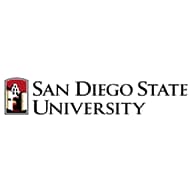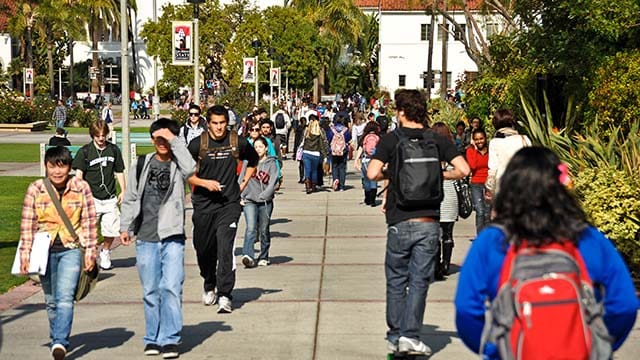As with many large universities, SDSU receives a high volume of calls. In fact, during busy times, the greatest call volume comes from student services like enrollment (admission, advising, etc.), financial aid, and account services (collections, cashiers, loan disbursement, etc.). With such a high level of activity, it was essential that SDSU select a solution that could handle its mission critical voice application requirements.
SDSU opened a bid process and considered alternatives from Avaya®. The OpenText™ CX-E Voice solution had a great reputation and was highly recommended by trusted university peers. “With an average of up to 200,000 calls a week, we needed a system that could reliably handle such a high call volume and provide a platform for growth. CX-E was the only solution that fit the bill,” said Kathleen Sullivan, SDSU Voicemail Administrator. Additionally, CX-E had an Octel TUI (telephone user interface) that would allow for easy migration and minimal retraining for SDSU’s end users. CX-E also offered an extensive set of next generation mobility and business process features on a highly scalable and resilient platform architecture designed for maximum uptime. These attributes tipped the scales in favor of CX-E.
A smooth transition
SDSU’s transition to CX-E was smooth and painless. Notices were sent to all faculty and staff, giving them warning of the change with highlights of the new features. Thanks to the Octel TUI, the transition was so seamless that only a handful of users signed up for the free training session.
The right interoperability to support UC components in the cloud
In addition to upgrading their voice application solution, SDSU also gained an extensive list of new features. Unified messaging had been top of SDSU’s wish list, but they needed a solution that could integrate with Google™ Gmail™ . SDSU’s hybrid cloud approach to implementing UC was not a problem, as CX-E is designed to deliver unified messaging to any email system (on-premises or in the cloud).
“We were very impressed with CX-E’s flexibility to integrate with our Google Gmail email system and make messages accessible through mobile devices or a web client. It was just so easy,” said Riny Ledgerwood, SDSU Director of Voice Services and ATI.
4X savings in maintenance plus enhanced resiliency
The CX-E solution delivered major economic benefits as well. SDSU’s CX-E maintenance costs are now much lower, “we reaped 4X savings in maintenance,” continues Ledgerwood.
SDSU now had the communications resiliency they needed. CX-E was implemented using a deployment architecture of three Call Servers and one System Server. The System Server is the system management and control console. It provides a centralized location for the system database as well as the message store. The Call Servers run real-time applications and are responsible for answering calls, accessing information, and recording messages. By deploying multiple Call Servers, all integrated with a single System Server, SDSU achieves a high level of redundancy. In the event of a Call Server failure (or maintenance shut down), the remaining Call Servers continue to handle call traffic with no disruption in service.
The future is bright with CX-E
SDSU took CX-E to the next level to capitalize on its powerful speech-enabled features. First on deck is the deployment of campus-wide telephone directory, which replaced their existing directory with one that is speech-enabled. SDSU also plans to utilize CX-E next generation personal assistant for faculty and staff personal productivity improvements in the future.
“CX-E has been a great system for us—it’s user-friendly, intuitive and low maintenance. We’ve only scratched the surface of its feature-rich capabilities and look forward to continuing to explore how it can make life easier for our thousands of faculty and staff,” said Ledgerwood.
Thanks to the flexibility of the CX-E the faculty and staff of SDSU have and will continue to reap the benefits of a comprehensive solution for years to come.
 San Diego State University
San Diego State University



